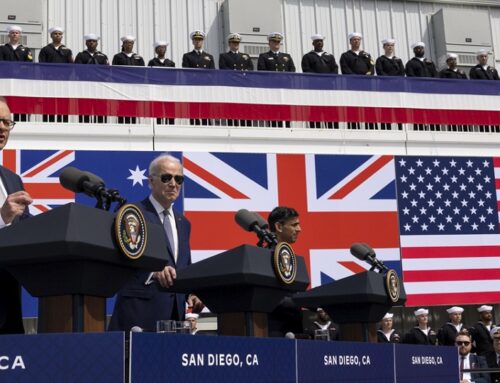Photo by Rob Lambert on Unsplash
In U.S. politics, Republicans and Democrats rarely agree on much. But these days it seems the opposing parties do agree on one thing: China. The two parties are united over the need to counter the economic and military threat increasingly posed by Beijing.
Over the last decade, China’s powerful technology industry has been fueled by the Republic’s military-civilian fusion (MCF) strategy. In a way not dissimilar from the Soviet Union’s military and space technology efforts in the 1970s and ‘80s, or the role the Pentagon played in Silicon Valley’s beginnings around World War II—China’s powerful tech industry is strategically important to demonstrating its economic and military might.
Last week, the Senate passed a historically expansive industrial bill in a bid to combat China’s geopolitical influence. The nearly quarter-trillion-dollar legislation aims to boost America’s manufacturing and technological prowess by investing in critical areas of research and development, such as semiconductor manufacturing, artificial intelligence, robotics, and quantum computing.
Though the bill was promoted to the public as a jobs plan, the similarities between the legislation and China’s “Made in China 2025” plan reveal its main objective. The bill overlaps China’s own ambitions both in relation to targeting competitive industries and in its aim of industrial self-reliance. Regardless of the stated objectives, the New York Times notes that the debate over its passage has been “laced with Cold War references and warnings that a failure to act would leave the United States perilously dependent on its biggest geopolitical adversary.”
The bill is only the latest move in an ongoing power struggle between China and the U.S., where technological research and development is a principle battlefront. Earlier this month, President Biden signed an executive order banning Americans from investing in Chinese companies that support its military, and in 2019 Trump brought visa restrictions for PLA-associated students and researchers.
It’s difficult to predict how effective these U.S. efforts will be in confronting China’s MCF strategy. However, the legislations are part of a broader attempt at disentangling the two superpower’s technological industries—a process that is sure to be long and complicated, and will undoubtedly drag countries like Australia further into the ring.
Between China, the U.S. and other global tech superpowers, knowledge capital as well as supply chain lines are crossed and tangled. The field of quantum science and technology is distinctly collaborative in nature. International teams of expertise define the private industry and multidisciplinary, global institutions facilitate cross-disciplinary innovation.
It seems the early noughties narrative of knowledge exchange and increased trade as beneficial for Sino-Amerian relations has backfired. But in today’s highly globalised world, the cost of geopolitical fractures will be both far-reaching and unpredictable.
The sweeping U.S industrial bill heralds a new era of government support for industry-led technological predominance. While the intention is to strategically counter China’s advances, it remains to be seen whether existing networks of research and development can be unraveled to the benefit of any one nation or if we will just end up tying ourselves in knots attempting to do so.







Leave a Reply